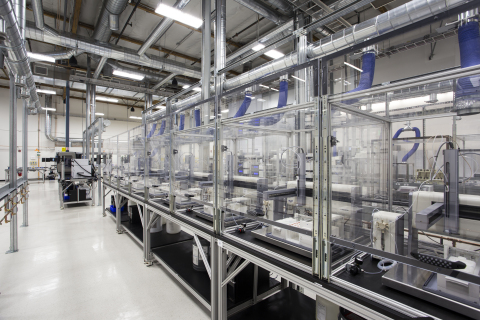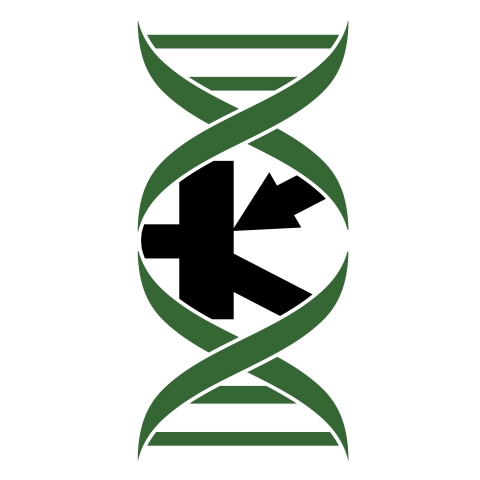SOUTH SAN FRANCISCO, Calif.--(BUSINESS WIRE)--Emerald Therapeutics, a scientist-led company re-imagining the way laboratory research is conducted, today announced the opening of its first Emerald Cloud Lab (ECL) production facility, ECL-1, in the biotech corridor of South San Francisco.
ECL-1 is a state-of-the-art life sciences laboratory that scientists can remotely access via the Internet where automated robotics conduct experiments exactly as specified by the user.
“The ECL is a virtualized laboratory and allows scientists to abstract away the manual labor currently inherent in scientific research,” said Emerald Therapeutics Co-Founder and Co-CEO, Dr. D.J. Kleinbaum. “Scientists are able to design and drive their experiments as if they were standing in front of the instrument themselves, giving them full control over the process without the grunt work and friction usually associated with research. We hope this system will empower people in the same way that Taiwan Semiconductor Manufacturing Company (TSMC) did in the semiconductor industry and Amazon Web Services (AWS) did in the IT world.”
Emerald unveiled the ECL in mid-2014 and announced that its invitation-only beta trial would begin in Q1 of 2015. Since then, the company built a new production facility from the ground up and installed over $3 million of scientific instrumentation including liquid handlers, mass spectrometers, HPLCs (high pressure liquid chromatography), flow cytometers, DNA synthesizers, epifluorescence microscopes, plate readers, lyophilizers and a few dozen others.
The ECL offers over forty different experiment types that its beta users can be running in under 48 hours. Over the next eighteen months, Emerald will be expanding the number of experiments to over 100, enabling scientists to do any standard in vitro life sciences experiment on the ECL, including Nuclear Magnetic Resonance (NMR), gas chromatography, flow chemistry, and DNA sequencing.
According to Dr. Brian Frezza, Emerald’s other Co-Founder and Co-CEO, all of the ECL’s automation is just a tool to gain full computational closure around each experiment. “Capturing everything relevant to the experiment in robotics allows us to ensure that every experiment has push-button reproducibility. In addition, we’re able to create a system that automatically captures extreme levels of detail about the experiments beyond just the raw data, including sample tracking, protocol information, controls and maintenance information, and environmental data. In many ways, the real value of our system is not in the robotics, but rather in the ability to capture, share, search, and reproduce experimental results.”
Dr. Frezza also explained that one of the keys to Emerald’s approach was its unique strategy for software development. “Every experiment interface is written and designed by scientists, for scientists,” said Frezza. “Our Scientific Development team includes people from a diverse cross-section of scientific disciplines and ensures that the interface people will be using was written by scientists who have done that experiment hundreds of times before.”
The ECL grew organically out of Emerald’s stealth therapeutic initiative. As a result, it is quite full-featured and well-tested: Emerald’s research team has already run over 500,000 samples through the system. One of the reasons this team has been able to handle such a large workload is the efficiency gains of running experiments through the ECL: individual scientists at Emerald run between ten and fifteen experiments per day, as compared to one to three experiments per day at other research organizations.
Now the company will start taking a limited number of users off its waitlist of over 300 scientists and labs that signed up after the 2014 unveiling, including scientists from Big Pharma, top universities, and biotech start-up companies. Customers will get access to both the experimental capabilities of the system and to its full suite of data visualization, analysis, and sharing tools.
One of the beta users is from the academic sector, Sanjiv Sam Gambhir, MD, PhD, the chairman of the Department of Radiology at Stanford University School of Medicine and a professor by courtesy in the departments of Bioengineering and Materials Science and Engineering at Stanford University.
An example customer from the biotech startup space is Ethan Oren Perlstein, PhD, founder and CEO of Perlstein Lab, a leading biotech startup, who is using the ECL to research orphan drug treatments. Perlstein has a PhD in molecular and cell biology from Harvard University, and was a Lewis-Sigler Fellow at Princeton University.
“Our biggest expense in 2014 was equipment, the next biggest slice was payroll and that’s the reality for any biotech start-up,” said Perlstein. “With the ECL, we can extend the work we do at our lab without the added equipment and staff. Emerald has developed a model that can have a huge impact on biotech research.”
A time-lapse video of the construction of the ECL-1 is available here.
About Emerald Therapeutics
Emerald Therapeutics is a venture-backed biotechnology company based in Menlo Park, California. Founded in 2010 by two scientists and life-long friends from Philadelphia, Emerald is staffed by top scientists and engineers from around the world. The company’s mission is to change the fundamental landscape of pharmaceutical development. Emerald’s investors include Founders Fund, Schooner Capital, and Max Levchin. For more information on the company visit: www.emeraldcloudlab.com. @EmeraldDNA




